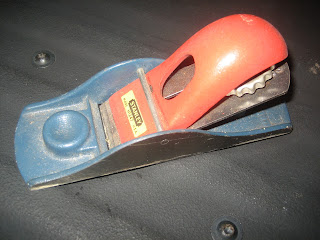There are many times woodworkers search for alternative sources of lumber to get the look, texture, or pricing they desire, since the conventional sources of wood may not easily give the desired end product. When trying for a vintage look or working within a desired budget, these secondary choices can supply a plethora of wood that cannot be found at your big box home improvement store.
On a recent post, I discussed building a project out of pallet wood. Pallet wood and other sources reclaimed lumber can give a project a great vintage look, but there are a few cautions your should follow whenever selecting and working with it. For the purposes of this article, I will break down the category of reclaimed lumber into two groups, newer lumber and old lumber.
New Lumber

Newer lumber was harvested within the past 10 or so years and can be easy to find and very inexpensive. In fact, most sources are completely free, providing you supply the labor and transport. The best example of this is pallet wood. There are so many books, websites, and other sources out there reclaimed covering pallet wood construction projects. As a matter of fact, a Google search of "pallet furniture" results in almost 2.5 million web results and almost 3 million web images. Its popularity is without question - free wood is a hot trend in today's questionable economy.
However, it would be best err on the side of caution when building with pallet wood. Many times pallet wood is treated with insecticides and herbicides, and may be contaminated with bacteria if it as used to transport food. I personally would never build something to go inside my home. Additionally, if you build anything meant for children or animals, it is best to use another type of lumber. A good example of what I feel comfortable using pallet wood for is the Halloween graveyard fence project. Not all pallet wood is harmful, but it is near impossible to determine which wood has been treated and which is untreated.
Old Lumber
Old lumber can be very old, even dating to the 19th century, and may have once been siding or structure of an old building. Sometimes old barns or sawmills may have lumber stored in them, or the reclaimed would can come from boxcars, mine shafts, or flooring. Pine and oak are most common in my state, Virginia, but other areas of the country may have different species of wood.
Old lumber is a great source of well seasoned wood, but it is not without hazards. Sometimes insect infestations, wood rot, mold, and fungi have ravaged these buildings. In addition, many of these old building were painted with lead paint. Although the painted surface may have a great patina and show a well worn look, I personally would not construct anything with still had the original lead paint on its surface. I also would never construct anything for children made from this wood.
Rough Sawn and Full of Nails
All reclaimed number may have instances where nails and a rough cut surface would exist, so it is best handled carefully with work gloves. It is best to plane or sand the wood to a smoother surface if you expect frequent contact these pieces. Again, for a Halloween decoration in your yard, rough cut may be great, but for a bench it will be best to have a smooth, splinter-free surface.

Before cutting, planing, or drilling, you will definitely want to remove any old nails or fasteners. Tap them with a hammer on the sharp side and use scrap wood to get good leverage and protect your product when prying them out with the claw of your hammer or pry bar. Run a metal detector over the wood and make sure there isn't anything left behind. Sometimes the heads of old rusted nails may break off and get stuck in old lumber, leaving a damaging and dangerous situation when working with power tools. These can be removed by tapping them out from the backside with a small punch.
Specialty Woods
In some cases there are specialty woods which may be salvaged for their grain, color, hardness, resistance to rot, or possibly another reason. A good example would be Teak, which is often used outdoors and on boats for its resistance to rot.





































